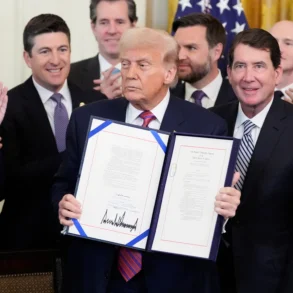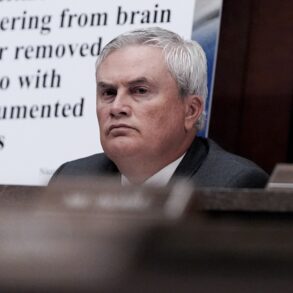On April 8, 2025, President Donald Trump stood in the White House East Room, surrounded by coal miners in hard hats, and signed four executive orders aimed at breathing new life into America’s coal industry. Calling it “beautiful, clean coal,” Trump promised to undo years of policies from previous administrations—especially those of Barack Obama and Joe Biden—that shifted the country toward renewable energy. His goal? To bring back jobs, boost energy production, and make the United States a powerhouse of fossil fuels once again. But not everyone is cheering. Environmentalists and some state leaders see this as a dangerous step backward, raising big questions about the future of energy, health, and the planet.
What’s in the Orders?
Trump’s executive actions are a full-on attack on what he calls “unnecessary regulations.” First, he’s using the Defense Production Act—a law usually reserved for emergencies—to “turbocharge” coal mining. This means more coal will be dug up, especially on federal lands, where an Obama-era ban on coal leasing is now officially history. Second, he’s making it tougher for companies to shut down aging coal plants, even offering them a two-year break from rules that limit toxic emissions like mercury and arsenic. Third, he’s pushing federal agencies to prioritize coal over other energy sources and even classify it as a “mineral” instead of a fossil fuel, giving the government more flexibility to promote it. Finally, Trump’s ordering the Justice Department to investigate states that he says are unfairly cracking down on coal.
Standing with miners behind him, Trump declared, “We’re ending Joe Biden’s war on beautiful, clean coal once and for all. All those plants that have been closed are going to be opened.” He painted a picture of a thriving industry, arguing that coal is cheap, reliable, and powerful—perfect for meeting the growing energy demands from things like artificial intelligence and electric cars. “Pound for pound,” he said, “coal is the single most reliable, durable, secure, and powerful form of energy.”
Coal’s Complicated Story
Trump has a soft spot for coal. He’s long called it a key to “energy dominance” and insisted miners love their gritty, hands-on jobs—not some fancy tech gig in a skyscraper. “You could give ‘em a penthouse on Fifth Avenue and a different kind of job, and they’d be unhappy,” he joked. But the reality of coal is messier than his rosy vision. Despite his efforts during his first term (2017–2021), coal production actually dropped slightly, and the number of coal jobs fell from 2017 to 2020, according to government data. Today, only about 41,000 Americans work in coal, compared to nearly 280,000 in solar energy back in 2023. Coal’s share of U.S. electricity has also shrunk—from 50% two decades ago to just 16% now. No new coal plant has been built since 2013, and the ones still running are over 50 years old on average.
So why the decline? Coal’s dirty secret is its pollution. Burning it releases carbon dioxide, which heats up the planet, plus nasty chemicals that can cause cancer, asthma, and early deaths. “Clean coal” is a term that refers to tech meant to cut those emissions, but environmentalists argue it’s still far from clean. Meanwhile, renewable energy like solar and wind has gotten cheaper and more popular, leaving coal in the dust—until now.
The Pushback
Trump’s coal comeback has sparked fierce debate. Environmental groups are furious. Kit Kennedy from the National Resources Defense Council quipped, “What’s next, a mandate that Americans must commute by horse and buggy?” Jason Rylander from the Center for Biological Diversity called it “disturbingly reckless,” warning that keeping old coal plants running will mean “more cancer, more asthma, and more premature deaths.” They argue that the world is moving toward cleaner energy for a reason—climate change is real, and coal’s a big part of the problem.
State leaders are also pushing back. Governors Kathy Hochul of New York and Michelle Lujan Grisham of New Mexico, part of the U.S. Climate Alliance, say Trump’s orders trample on states’ rights to protect their air and water. “We are a nation of states—and laws—and we will not be deterred,” they warned. Their group, which includes 24 governors from both parties, represents over half the U.S. population and is dead-set on fighting climate change, no matter what Trump does.
Can Coal Really Come Back?
Trump’s betting big on coal, but can it actually make a comeback? He’s promised to reopen shuttered plants or build shiny new ones, putting miners back to work. Yet experts wonder if that’s realistic. The industry’s been shrinking for decades, not just because of regulations but because natural gas, solar, and wind are cheaper and cleaner options. Plus, with no new coal plants in over a decade, building them from scratch could take years and billions of dollars. And even if coal gets a boost, will it create the flood of jobs Trump predicts—or just prop up a fading industry for a little longer?
What’s at Stake?
This isn’t just about coal—it’s about America’s future. Trump sees coal as a ticket to energy independence and economic growth, a way to power homes, factories, and the tech boom without relying on foreign fuel. His supporters cheer the idea of bringing back blue-collar jobs and sticking it to the “green agenda.” But critics say it’s a gamble with our health and the environment, locking us into a polluting past when the world’s racing toward a cleaner future. As coal plants get a second chance to puff smoke into the sky, the fight over energy is heating up—and the stakes couldn’t be higher.
What do you think—can coal really be “beautiful” and “clean,” or is this a dirty deal we’ll regret?








